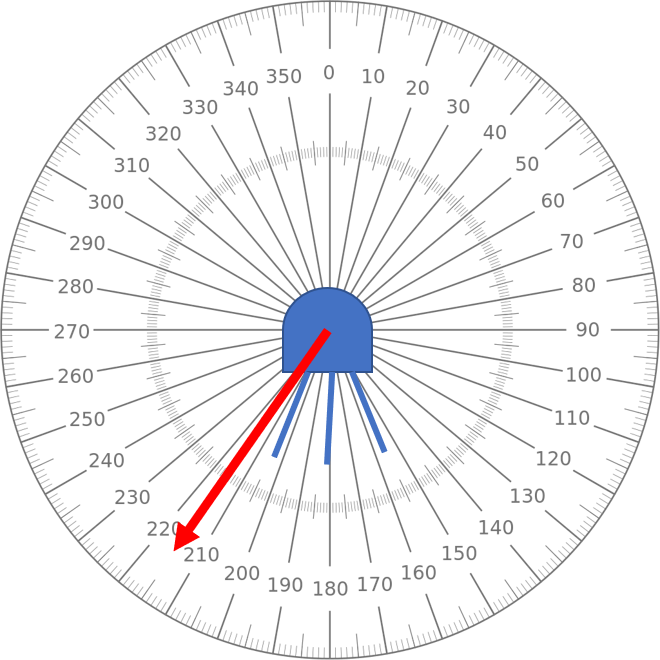21 Azimuth
Elizabeth Johnson
Learning Objectives
Students will be able to:
- Identify the azimuth of a linear feature (like a plate motion vector).
- Determine the cardinal direction (E, NE, SE, etc.) of plate motion from the azimuth.
What is Azimuth?
Azimuth is an angular measurement which uniquely determines the orientation of a feature on the surface of Earth.
Many geologic and geographic features are oriented in specific directions. It is very useful to be able to exactly measure orientation so we can analyze relationships between different geologic features. For example, geologists can measure the orientation of a contact or boundary between two different rock units. We can also record direction of motion, like the direction a stream is flowing, or the direction a landslide traveled from its source, or the motion of tectonic plates (this lab).
Figure 8 shows the cardinal directions: N, S, E, and W, along with more specific compass directions like NW. These subdivided compass directions are useful for qualitative descriptions of a general orientation, but for most geological applications we need to pinpoint direction more accurately. Azimuth divides the space around a point (the crosshair in the center of Figure 8) into 360 degrees. North is defined as 0 degrees, and is also 360 degrees (the complete circle). East is 90 degrees, South is 180 degrees, and West is 270 degrees. A perfect northeast orientation is at 45 degrees, half of the angular distance between North (0 degrees) and East (90 degrees).


Reference
Figure 8 modified from: https://commons.wikimedia.org/w/index.php?curid=19070259 By Autiwa – Own work, CC BY-SA 3.0, Link

